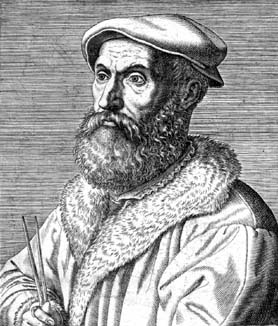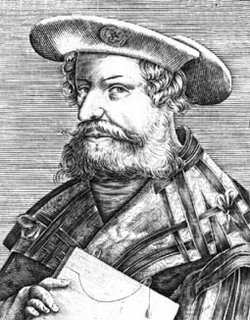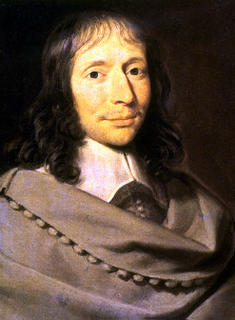
Sir Isaac Newton was born in Lincolnshire, England in 1643, the same year that Galileo died. He was born premature and was not expected to live. His father, a farmer also named Isaac, had died three months before his birth. His father had owned animals and property. By the standards of the day, he was born into a wealthy family. Still, his father had been uneducated and unable to sign his name. It was the intention of his mother, Hanna, that young Isaac would become a farmer.
When Isaac was two years old, his mother married Barnabas Smith, a church minister from a neighboring town. From this point on, Isaac lived with his grandparents. He was raised as an orphan and it is said that it was not a happy childhood.
In 1653, Barnabas Smith died and Isaac moved back with his mother. Isaac began attending a grammar school in Grantham. As a child, he did not do well in school. His teachers considered him to be 'idle' and 'inattentive.' Rather than socialize with other students, he kept to himself.
When he was 17, his mother called him home in order to run the farm. Newton seemed to show little interest in learning the farm responsibilities. He prefered to experiment and build gadgets rather than watching the sheep. Eventually, it was decided that farming was not the career for young Newton. Instead, in 1661, he was sent to Cambridge.
Despite the property owned by his mother, Newton was sent to Cambridge as a subsizar, that is, a student who had to perform labor for other students in order to go to Cambridge. His mother refused to pay any money for Newton's schooling.
At Cambridge, Newton began to study law. In addition, he took time to study mathematics and philsophy. At the time, philosophy was dominated by Aristotle. Despite this, Newton took strong interest in the works of Gassendi, Boyle, and Kepler, and Descartes.
Newton's interests in mathematics supposedly began in 1663, when he purchased a book on astrology and was unable to understand its mathematical details. He started on Euclid's Elements but found the initial proofs too simple. It was only when he came upon the principle that parallelograms that have the same base and the same parallels are equal (for details on this proof, see
Euclid's Book I, Proposition 35). This gave Newton a new respect for the concept of proof and he read Euclid's Elements very thoroughly from beginning to end.
In the summer of 1665, an outbreak of the Bubonic Plague forced the closure of Cambridge. For the next two years, Newton returned to his mother's house where he worked on his independent projects which included ideas that would later become his theory of calculus and his laws of motion. It is often said that 1666 was the year that Newton came up with his most important ideas.
Cambridge reopened in 1667 and Newton returned. In 1666, Newton wrote three very important papers on calculus. He was 24. Before these papers, no one had known who Newton was. These papers covered slopes on curves (differentiation) and areas under curves (integration) and the relationship between these two methods (fundamental theorem of calculus). These results had been applied to very specific cases before Newton but nothing before matched Newton's generalized methods and nothing compared to the depth of Newton's understanding of the two methods and their relationship. In 1667, Newton became a minor fellow of Trinity College. One might wonder with his accomplishments with calculus why he would receive only a minor fellowship. The reason was probably because Newton kept to himself for the most part. He did not talk during dinner and did not join the other scholars in social activities.
In 1668, Newton built the first ever reflecting telescope. Previous to this, all the telescopes were refracting telescopes, that is, a person looked directly through the telescopic lense. In a reflecting telescope, a person looked through a mirror that reflected the lense. This resulted in an unprecedented clarity of image. This enabled telescopes to be made smaller with significantly greater power of magnification.
Newton was so proud of his telescope which he had built himself that he started to demonstrate it to others. Word spread and it created a sensation. Newton was then became a member of the Royal Society of Science. The most prestigious group in science at the time.
In 1669, Newton became the Cambridge Lucasian Professor of mathematics. He received this office primarily from the stong support of Dr. Isaac Barrow who had held the post previously and decided to step down. At the time, all professors were expected to be ordained as ministers. Newton asked to be free from this requirement so that he could spend more time studying mathematics. His request was approved by King Charles II.
From 1670 to 1672, Newton focused his time on optics. It was a this time that he did his very famous experiment with the prism which demonstrated that white light was composed of a spectrum of colors. It was also at this time that he presented his theory of light as a particle and the concept of the ether.
In 1671, Newton presented his telescope to the Royal Society. He submitted a paper on optics detailing the ideas that led to the reflecting telescope. At the time, Robert Hooke was seen as the leading expert on optics. He aggressively attacked many of the ideas of in Newton's paper.
In 1678, Newton experienced a mental breakdown. He was accused of plagiarism and later on, his mother died. Newton withdrew from his colleagues and became focused on alchemy. It is believed by scholars that it was Newton's deep interest in alchemy that helped him with his ideas about universal gravitation. Gravity, after all, is a mysterious force at a distance that is not explained so much as it is described mathematically.
In 1684, the problem of Kepler's planetary motions had become a very important topic of discussion for the Royal Society. The astronomer Edmund Halley had begun discussions with many of the leading scientists about their ideas of whether Kepler's laws were correct and whether they implied an inverse square force between planets. It was at this time that Halley spoke about this with Newton. He was very surprised to hear that Newton had already worked out the details and could demonstrate Kepler's principles with a proof. This work would become Newton's most famous work, the Principia. Interestingly, Newton did not have the funds to publish this work and it was mostly through the contributions of Halley that the Principia was completed and released to the world.
In 1689, Newton was elected to Parliament to represent Cambridge. Thus, began his career in London. In 1699, he became Master of the Mint. With this position, he became a very wealthy man. He took the position very seriously and was responsible for a significant "recoining" that occured.
In 1703, he was elected President of the Royal Society. Each year, he was reelected until his death in 1727. In 1705, he was knighted by Queen Anne.
Sir Isaac Newton is perhaps the most important scientist and mathematician who has ever lived.
 Edward Waring, despite not being very well known even today, was one of the most talented mathematicians of his time. He was cursed by the inability to properly communicate his ideas coupled with a fascination for esoteric mathematical topics. One of his biographers wrote:
Edward Waring, despite not being very well known even today, was one of the most talented mathematicians of his time. He was cursed by the inability to properly communicate his ideas coupled with a fascination for esoteric mathematical topics. One of his biographers wrote:











